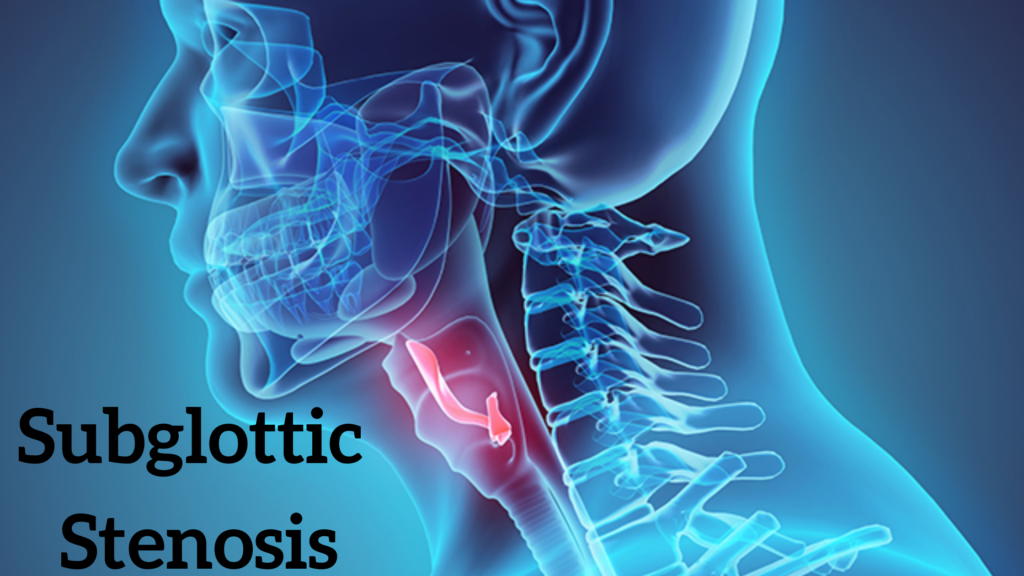Subglottic Stenosis
Subglottic stenosis (SGS) is a narrowing of the airway just below the vocal cords (the subglottic space, part of the larynx). It can partially or completely obstruct airflow, causing breathing difficulties.
📍 Anatomical Location:
- Located below the vocal cords (glottis) and above the trachea
- The subglottis is the narrowest part of the upper airway in infants and young children
🧬 Causes:
🔹 Congenital (present at birth):
- Abnormal development of the airway cartilage
- Often diagnosed in infancy or early childhood
🔹 Acquired (most common):
- Prolonged intubation (tube in the airway)
- Trauma to the airway (surgery, tracheostomy)
- Infections (rarely, e.g. tuberculosis, diphtheria)
- Autoimmune diseases:
- Granulomatosis with polyangiitis (Wegener’s)
- Relapsing polychondritis
- Sarcoidosis
- Idiopathic (unknown cause, especially in adult women)
🩺 Symptoms:
- Noisy breathing (stridor, especially during inhalation)
- Shortness of breath, especially with exertion
- Voice changes (hoarseness)
- Chronic cough
- Recurrent croup-like episodes in children
- Difficulty swallowing (in severe cases)
🔍 Diagnosis:
- Laryngoscopy or bronchoscopy: Direct visualization of narrowing
- CT scan or MRI: To assess extent of stenosis
- Pulmonary function tests: May show upper airway obstruction
📏 Severity Classification:
Cotton-Myer grading system (based on percentage of airway obstruction):
- Grade I: <50% narrowing
- Grade II: 51–70%
- Grade III: 71–99%
- Grade IV: No detectable airway
💊 Treatment:
🔧 Non-surgical/Minimally invasive:
- Endoscopic dilation (balloon or rigid dilators)
- Laser surgery or microdebridement
- Topical or injected steroids (reduce inflammation and scarring)
- Mitomycin C application (to reduce scar tissue formation)
🏥 Surgical:
- Laryngotracheal reconstruction (LTR) – Widening the airway with cartilage grafts
- Cricotracheal resection (CTR) – Removal of the narrowed section and rejoining the airway
- Tracheostomy – May be used temporarily or long-term in severe cases
